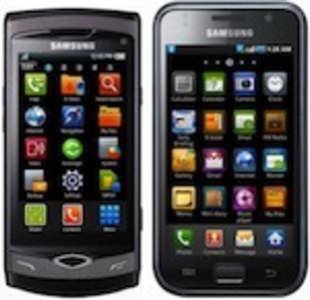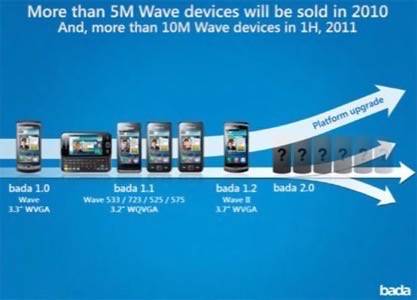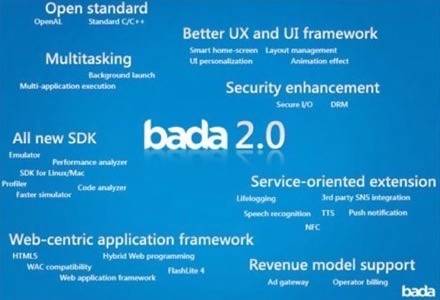Samsung recently announced it expects to sell around 5 million bada-powered handsets by the end of 2010 and that the total number of application downloads in Samsung’s app store is expected to surpass 50 million by December. That’s an impressive start for a mobile operating system that was only publicly revealed a year ago, where the first bada phone, the Samsung Wave, didn’t ship until June, and where the Wave was the only bada phone available until October when additional models were launched.

To put this in perspective, Samsung has been shipping more Wave phones in the past few months since its launch than any other smartphone manufacturer except for Apple with the iPhone. But does that mean developers should now be paying attention to bada?
In addition to the solid, if not ground-breaking, sales figures for bada devices comes additional news on app downloads: Samsung Apps, the application marketplace installed on bada-powered phones has also seen increases along with Wave sales. Launched in France, Italy and the U.K. in September 2009, the app store is now available in 118 countries.
Samsung says it expects to see the number of app download surpass 50 million by December.

Besides the original Wave, Samsung now has other models including the Wave II, Wave525, Wave533, Wave575 and Wave723.
Some may wonder why Samsung has developed its own smartphone operating system when it’s already so heavily invested in Android and Windows Phone 7 devices, but that’s par for the course for Samsung, which likes to have several horses in the race, so to speak. In the past, Samsung has released phones running Windows Mobile, Palm OS, LiMo and Linux and was supporting Symbian up until this year when it announced that support would end.
Bada represents “a huge opportunity for Samsung to push…into the ‘featurephone’ space where a decent handset range at sensible price points could see the platform flourish,” writes Mobile Business Briefing’s senior editorial analyst, Matt Ablott.
bada 2.0: Now It’s a Smartphone
With bada 2.0, the next version of the mobile operating system (now at version 1.2), Samsung is promising more smartphone-like features, including a better user interface, Near Field Communication (NFC), a smarter homescreen, SDK support for Linux and Mac, SNS integration and more.
This update is what has prompted some mobile analysts to concede that bada is a true smartphone OS, whereas before they’ve been cautious to do so. Senior Analyst at Strategy Analytics Alex Spektor says that his firm will consider bada a smartphone OS when 2.0 launches, for example, but also thinks the platform faces some challenges going forward.

Developers Should be Cautious
Bada is a proprietary, one vendor OS, says Spektor, but unlike other vendors such as Apple and RIM with their iOS and BlackBerry OS platforms, Samsung has not devoted its entire portfolio to bada. Simply put, Samsung hasn’t shown full commitment and it’s not 100% behind the platform, he says.
As for whether it’s time for developers to start paying attention to bada, that depends. If the bada 2.0 SDK (software development kit) makes it easy enough to port apps from leading smartphone platforms over to bada, then developers may as well do so. But if the SDK requires building apps from the ground up, then Specktor advises caution.
Forrester mobile analyst agrees that developers should be cautious. “Most developers have limited resources, so they must prioritize their platforms based on where they see the greatest possibilities for revenue, visibility, co-marketing funds, etc.,” he said. “In that equation market share plays a big role and bada is still far behind the other platforms competing for their mindshare.”
More details on the SDK and bada 2.0 will likely be revealed at CES or Mobile World Congress next year.




















